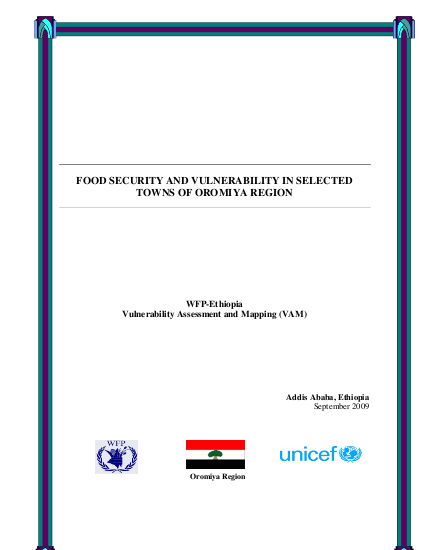
Oromiya National Regional State is one of the nine Regional States within the structure of the Federal Democratic Republic of Ethiopia. Oromiya shares boundary with every Regional State of Ethiopia except Tigray. The region covers about 353,632 km2 and is inhabited by a population of about 27 million in 2007, making it the largest regional state in terms of both population and area. Urban inhabitants number 3,370,040 or 11.3% of the population. The region has an estimated population density of 76.93 people per square kilometer. For the entire region 5,590,530 households were counted, which results in an average of 4.8 persons to a household, with urban households having on average 3.8 and rural households 5.0 members. The region, like all the other regions of the country, has been affected by the impact of inflations that started increasing in 2005 and apparently resulted in increased food insecurity in urban areas. The prices of cereals have increased by more than 100% since mid 2005 when the country faced a spiral of price increases.
The “new emergency” facing the urban poor resulted in the Government initiating an urban grain market stabilization program in 2007. The program started initially in Addis Ababa and was expanded to cover 12 urban centers. Since April 2007, the Government has sold over 420,000 MT of wheat to urban consumers at a subsidized price. The Government continued with the program in 2008 and 2009 with further grain imports for the program. The Government also took some fiscal and monetary measures in 2008 by lifting certain taxes from food commodities (especially oil), as well as measures to curb the excess supply of money. With further increases in cereal, pulses and oil prices expected as a result of the general global price increases and reduced production from climate change imminent, it is becoming ever more important to understand and monitor people's vulnerability to these changing circumstances. As shocks and hazards affecting urban food insecurity may ultimately lead to famine in the extreme, urban areas become prone to social unrest, as highlighted by food riots and unrest in some countries. Understanding drivers of urban food insecurity and recommending sustainable interventions is of paramount importance. In order to effectively support the efforts and initiatives being made, the Government, WFP and partners embarked on this study aiming at collecting useful information on effects of the soaring market prices on urban population and identify potential areas for interventions.
Resource collections
- Topics
- UN Habitat - Urban Response Collection
- Urban Response - Urban Crisis Preparedness and Risk Reduction
- Urban Response Collection - Community Engagement and Social Cohesion
- Urban Response Collection - Economic Recovery
- Urban Response Collection - Environment and Climate Change
- Urban Response Collection - Housing, Land and Property
- Urban Response Collection - Urban Crisis Response, Recovery and Reconstruction
- Urban Response Collection - Urban Resilience
